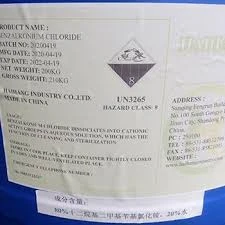poly aluminium chloride in wastewater treatment
The Role of Poly Aluminium Chloride in Wastewater Treatment
Wastewater treatment is a critical process in managing water pollution and ensuring the safety and sustainability of our water resources. Among the various chemicals used in this process, poly aluminium chloride (PAC) has gained prominence due to its effectiveness as a coagulant. PAC is a versatile inorganic polymer that enhances the treatment of wastewater by promoting the aggregation of suspended particles, making it easier to remove impurities.
Poly aluminium chloride is a compound formed by the reaction of aluminium hydroxide with hydrochloric acid. It appears as a white or yellowish powder and is highly soluble in water. Its chemical composition allows it to work efficiently in a range of pH levels, making it suitable for different wastewater sources, including industrial effluents and municipal sewage.
One of the primary functions of PAC in wastewater treatment is to aid in the coagulation process. During coagulation, PAC molecules neutralize the electrical charges of suspended particles, causing them to clump together into larger aggregates, known as flocs. These flocs are heavier than water and can then be easily removed through sedimentation or filtration. This process not only removes solid particles but also significantly reduces turbidity levels, which is essential for ensuring the clarity and quality of treated water.
Moreover, PAC is known for its high efficiency in removing organic matter, phosphates, and other impurities that are often found in wastewater. This is particularly important because excessive nutrients, such as phosphorus, can lead to algal blooms in natural water bodies, causing detrimental ecological impacts. By employing PAC in the treatment process, facilities can effectively reduce these harmful nutrient levels, contributing to better ecological health.
poly aluminium chloride in wastewater treatment

Another advantage of using poly aluminium chloride over traditional coagulants, such as alum, lies in its lower dosage requirement. PAC can achieve the desired treatment efficiency with smaller quantities, which not only lowers the chemical costs but also reduces the burden of sludge generation, making disposal more manageable. This characteristic is especially beneficial for wastewater treatment plants striving for operational efficiency and sustainability.
In addition to its chemical properties, the use of poly aluminium chloride aligns with increasing environmental regulations aimed at improving water quality. Many countries have set stringent standards for the discharge of treated wastewater into the environment. By utilizing PAC, treatment facilities can enhance their compliance with these regulations, ensuring that the treated effluent meets the necessary quality standards.
However, it is important to note that the effectiveness of PAC can be influenced by various factors, including the characteristics of the wastewater being treated. Therefore, it is essential for treatment operators to conduct thorough analyses and optimize PAC dosage and application methods to achieve the best results.
In conclusion, poly aluminium chloride plays a vital role in modern wastewater treatment processes. Its ability to efficiently remove suspended solids, organic matter, and nutrients makes it an invaluable tool in safeguarding our water resources. As global water pollution challenges continue to escalate, the adoption of effective and sustainable treatment chemicals like PAC will be crucial in our efforts to protect and restore water quality around the world.
-
Water Treatment with Flocculant Water TreatmentNewsJun.12,2025
-
Polymaleic AnhydrideNewsJun.12,2025
-
Polyaspartic AcidNewsJun.12,2025
-
Enhance Industrial Processes with IsothiazolinonesNewsJun.12,2025
-
Enhance Industrial Processes with PBTCA SolutionsNewsJun.12,2025
-
Dodecyldimethylbenzylammonium Chloride SolutionsNewsJun.12,2025





